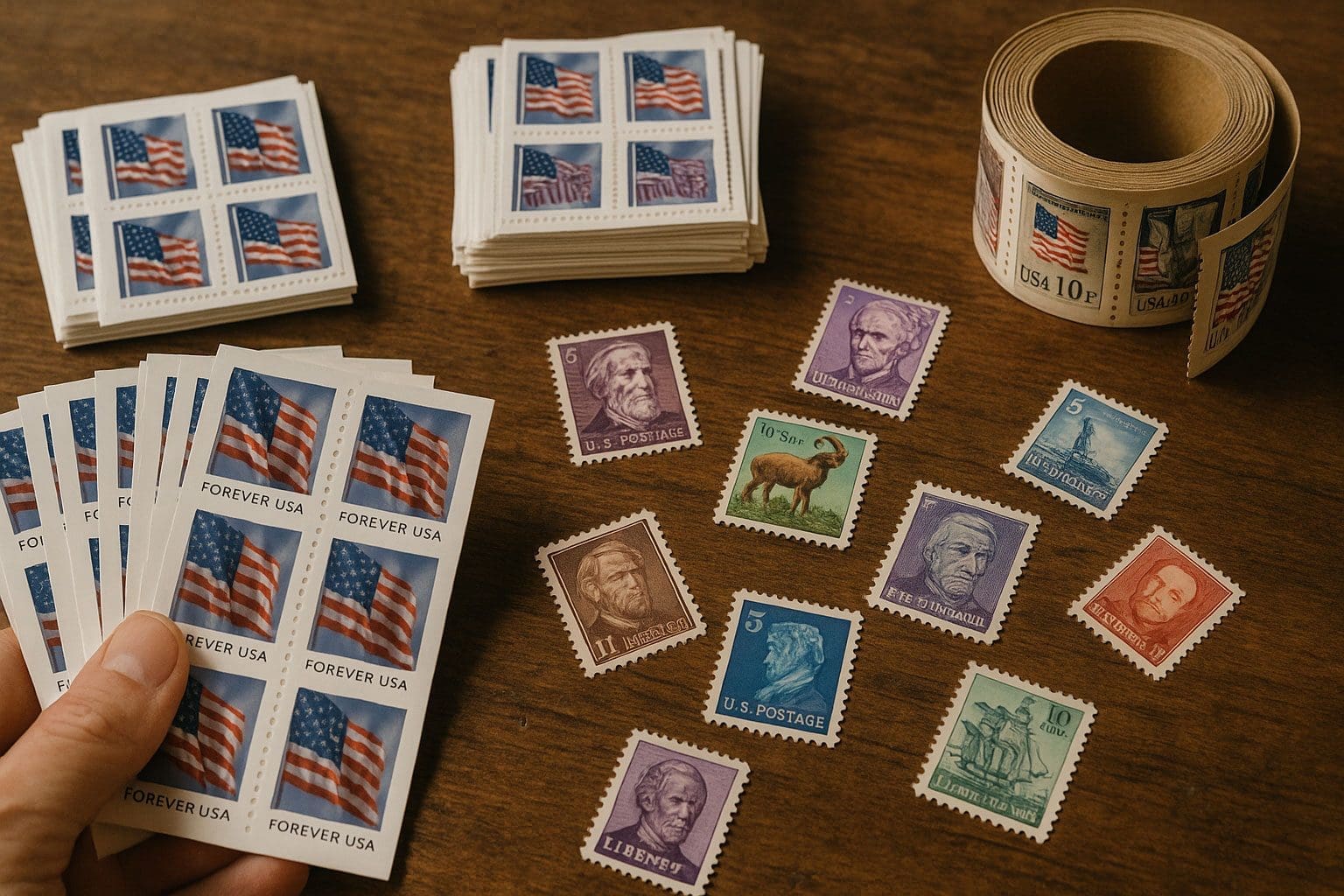
The United States Postal Service has raised the price of stamps multiple times over the past decade, and those increases are likely to continue. A First-Class Forever stamp, which once cost just 49 cents, now sits well above that mark—and the Postal Regulatory Commission has already approved further hikes. For consumers and businesses that rely on regular mailing, this steady climb in postage costs adds up fast.
That’s where discount stamps come in. Buying discounted postage has quietly become a savvy move for everyday people, side hustlers, small business owners, and even office managers looking to trim costs. But while the savings are real, not every source is safe. In fact, the market has been flooded with counterfeit stamps that have cost unsuspecting buyers thousands in rejected mail and penalties.
If you want to cut your postage costs without breaking any laws—or falling for a scam—there are safe, legal ways to do it.
What Are Discount Postage Stamps?
Discount stamps are legitimate, unused U.S. postage stamps sold below face value. The discount usually ranges from 5% to 25%, depending on the quantity, denomination, and source. These are not expired, damaged, or fake. They are fully valid for mailing and can be used just like stamps purchased at the post office.
These discounted stamps typically come from:
- Estate sales and liquidations
- Overstocks from businesses no longer mailing
- Philatelic sellers who offload modern postage to focus on collectibles
- Investors or collectors selling their holdings for cash
What sets these stamps apart from scams is simple: They are 100% authentic U.S. Postal Service-issued stamps.
Where to Buy Real Discount Stamps Safely
One of the most trusted places to find authentic discount postage is through verified online vendors who specialize in this niche. These retailers buy surplus postage in bulk and pass the savings on to the buyer. Many operate with long-standing reputations and documented guarantees.
For example, sites like BuyDiscountStamps.com offer verified, unused Forever stamps in sheets, coils, or rolls—often at 15%–25% below face value. These businesses source their inventory from estate liquidations, government auctions, and wholesale purchases from businesses downsizing or closing.
Brick-and-mortar options also exist, including coin and stamp shops or office supply stores that occasionally deal in surplus postage. However, the selection and discount levels can vary, and inventory is not always reliable.
The Rise of Counterfeit Stamps Online
The discount stamp market has seen a major influx of counterfeits, especially on online marketplaces and social media platforms. These fakes are often sold in bulk—like 100 Forever stamps for $20—and are almost always counterfeit. Scammers target buyers on Facebook Marketplace, Instagram ads, and major e-commerce platforms.
In 2023 alone, the U.S. Postal Inspection Service intercepted millions of counterfeit stamps shipped from overseas. Most of these fakes are high-quality reproductions, often printed in China, and can fool untrained eyes. But postal scanners spot them quickly—and the consequences are serious.
Mail sent with counterfeit postage may be:
- Returned to sender
- Destroyed or confiscated
- Subject to postage due penalties
- Flagged for fraud investigation
The buyer may also face legal risks if it’s found they knowingly used fake stamps, even if they initially purchased them unknowingly.
How to Spot a Counterfeit Stamp
Knowing how to identify real stamps can save you from losing money and mail. Here are a few key red flags when examining stamp offers:
- Too cheap: If it sounds too good to be true, it usually is. No one is selling 100 Forever stamps for $20 legally.
- Poor packaging: Counterfeits often arrive in loose stacks, not in official USPS rolls or sheets.
- Smeared ink or gloss: Authentic USPS stamps are printed with specific techniques. Fakes often lack texture or have excess shine.
- Suspicious sellers: New eBay or Amazon accounts with minimal feedback offering steep discounts should raise alarms.
Stick with established vendors who specialize in postage resale, offer guarantees, and provide clear contact details.
Can You Really Save That Much?
Yes—if you’re mailing often, the savings from discount stamps adds up fast. Consider this scenario: A small business ships 200 letters a month. At the current retail rate of $0.73 per Forever stamp, that’s $146/month in postage. With a 20% discount, the cost drops to $116.80—a savings of nearly $30 per month or $360 per year.
For individuals, wedding invitations, holiday cards, thank-you letters, and bill payments can easily run into the hundreds of dollars. Buying a roll of 100 Forever stamps for $65 instead of $73 means $8 in immediate savings. Multiply that by frequency and it’s easy to see how costs shrink.
Legal Gray Areas to Avoid
There are perfectly legal ways to buy discounted stamps, but there are also sketchy methods people sometimes use that carry risk:
- Buying stamps with credit card points and reselling: This can violate rewards program terms and is often shut down.
- Trading with strangers online: There’s no protection, and scams are common.
- Using stamps from unknown international sellers: Even if the price is tempting, they’re often counterfeit.
The safest route is purchasing from legitimate domestic businesses that verify authenticity and offer return policies.
What the USPS Says About Discount Postage
The U.S. Postal Service does not officially endorse any resale of postage, but it’s not illegal to buy or sell unused stamps as long as they are authentic and unused. In fact, the USPS itself unknowingly circulates millions of stamps that end up on the secondary market through closeouts, returns, or estate resales.
However, the USPS has issued warnings about counterfeit postage and aggressively investigates cases where fake stamps are involved. They encourage the public to report suspicious stamp sales and have provided tools for law enforcement to combat counterfeit operations.
Who Uses Discount Stamps?
- Small businesses: Especially those sending invoices, mailers, or thank-you cards in volume.
- E-commerce sellers: Particularly those on Etsy, eBay, or direct-to-customer sites.
- Nonprofits and churches: Many use discount postage for newsletters or donation appeals.
- Event planners: For invitations, RSVP cards, or promotional mailings.
- Regular households: Budget-conscious consumers use them for bills, birthday cards, or correspondence.
In most cases, these buyers aren’t hobbyists or collectors. They’re people looking for practical, everyday savings on a rising cost of living.
Tips for Buying Discount Stamps Without Regret
- Buy from a U.S.-based, reputable vendor
- Do not buy from Amazon or eBay. If the discount is more than 10% it’s 99.99% they are fake.
- Avoid social media “deals” or sites with no reviews
- Check that the stamps are marked as unused and authentic USPS issue
- Look for payment protection (credit card or PayPal)
- Keep documentation of purchase in case of issues
When used correctly, discount postage is one of the simplest legal ways to lower household or business mailing expenses.






